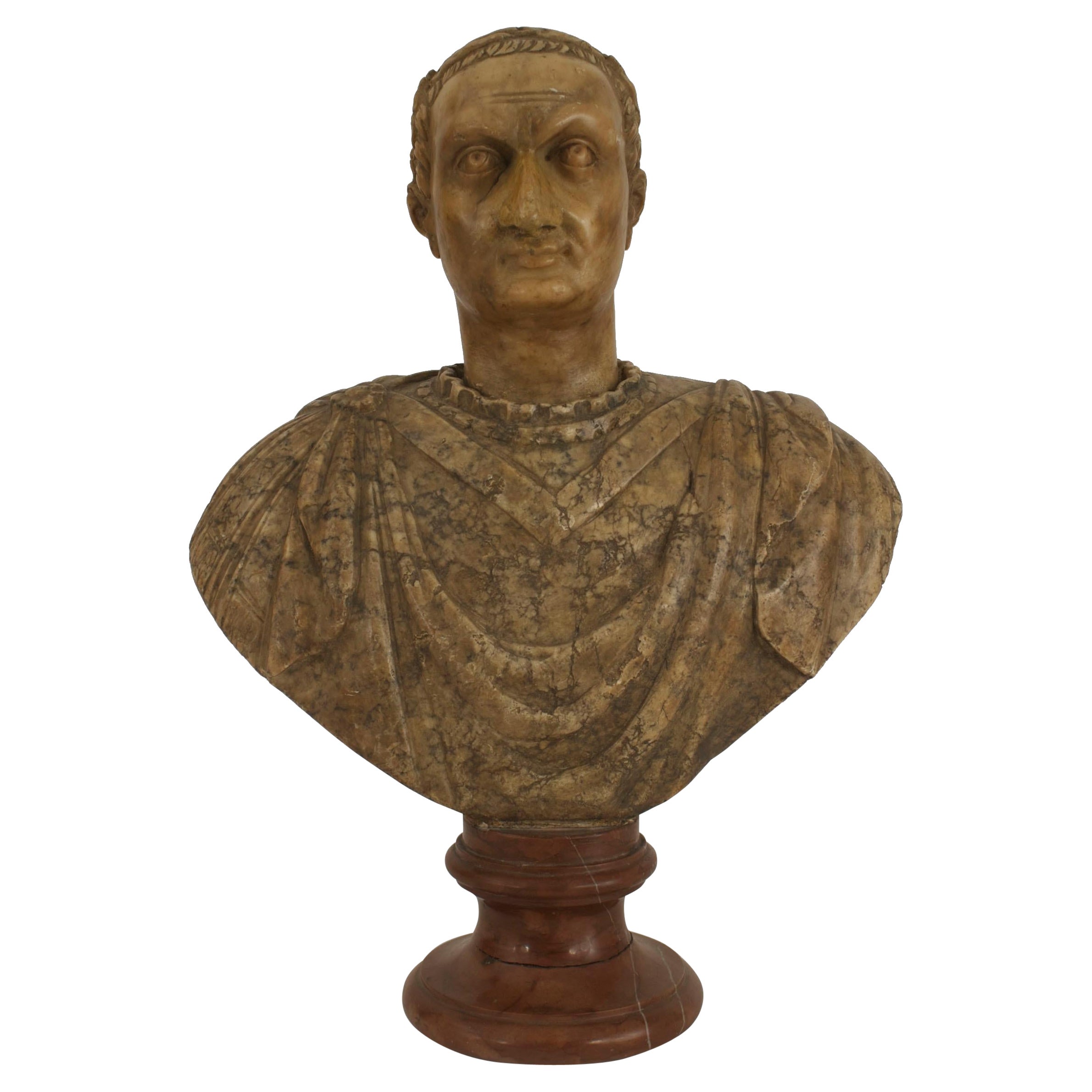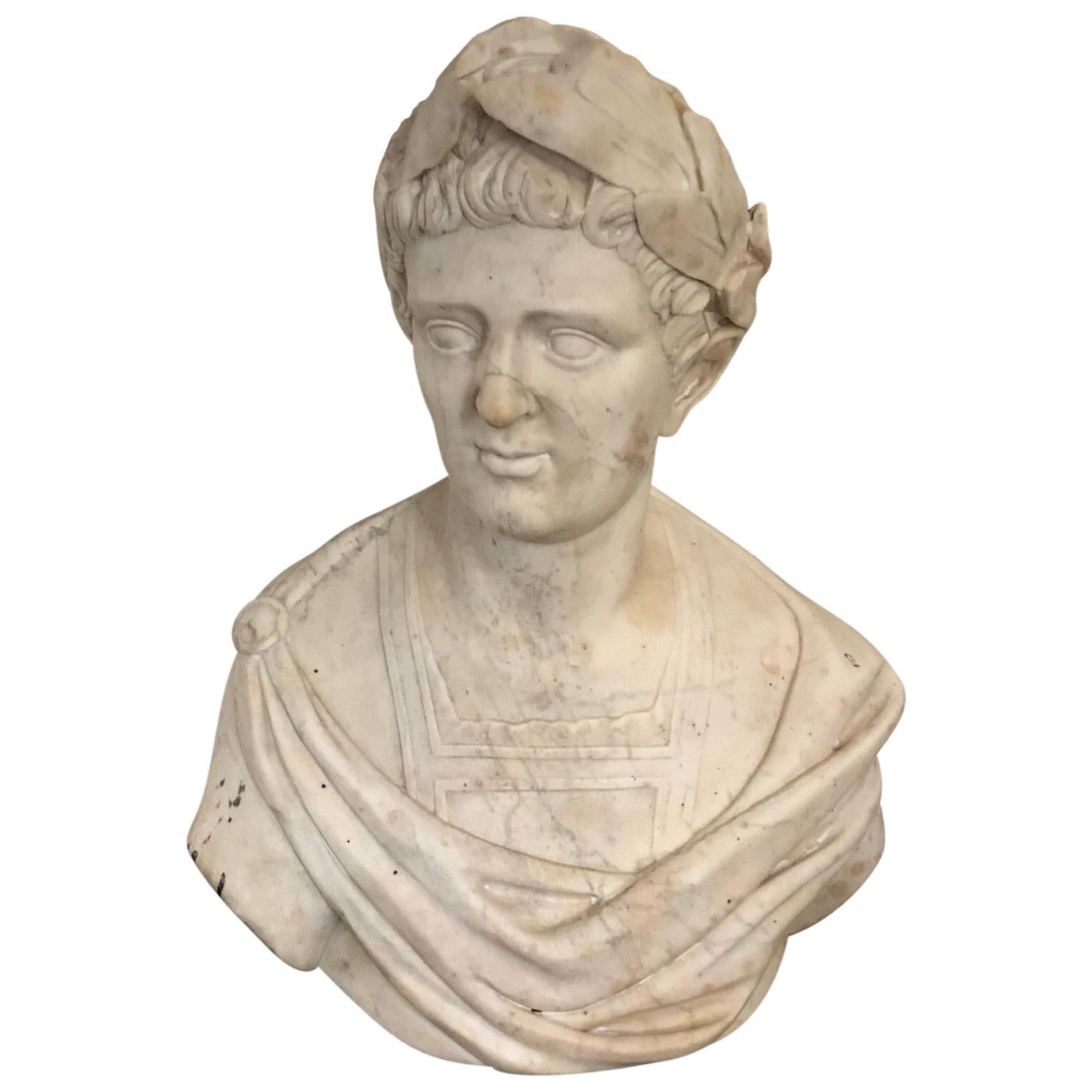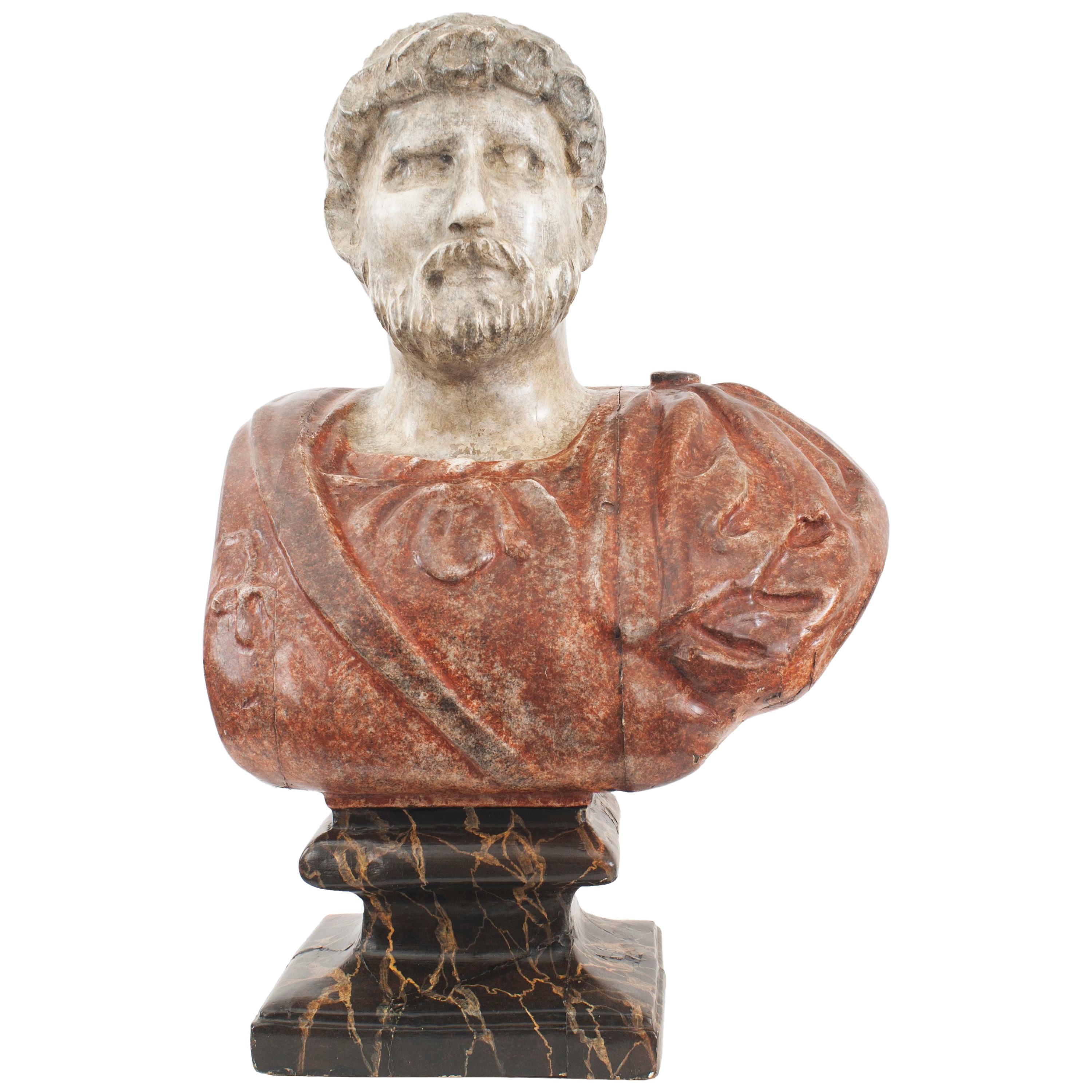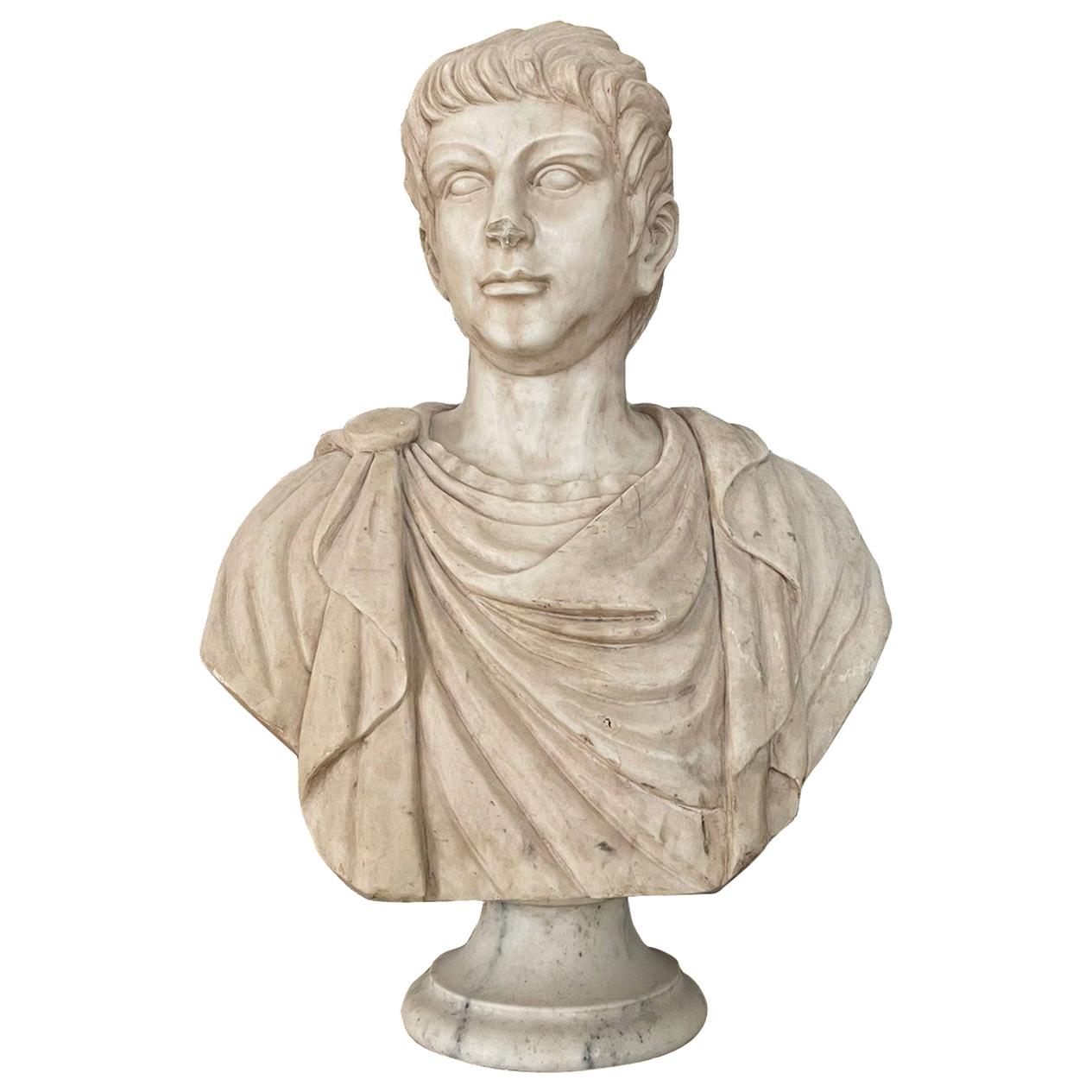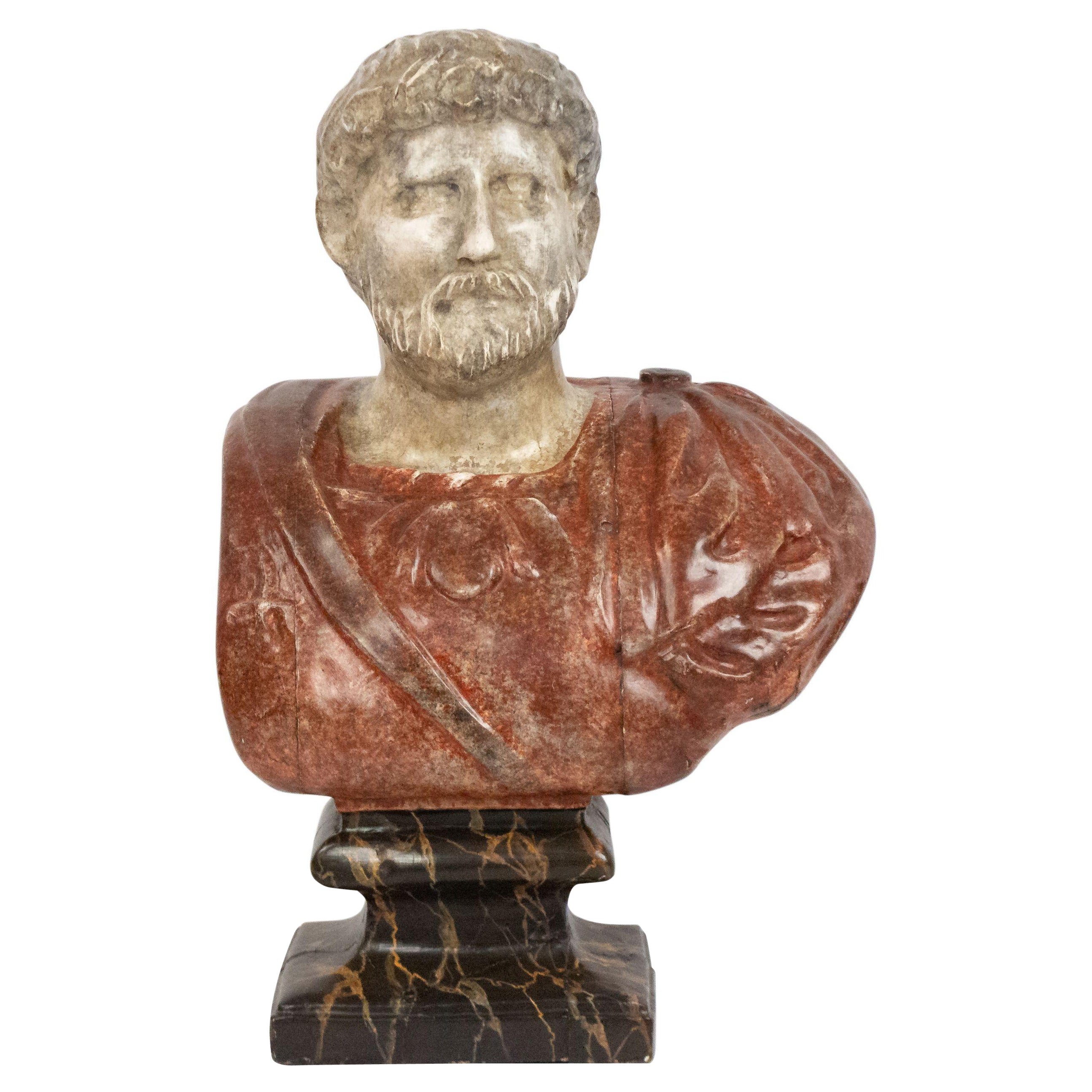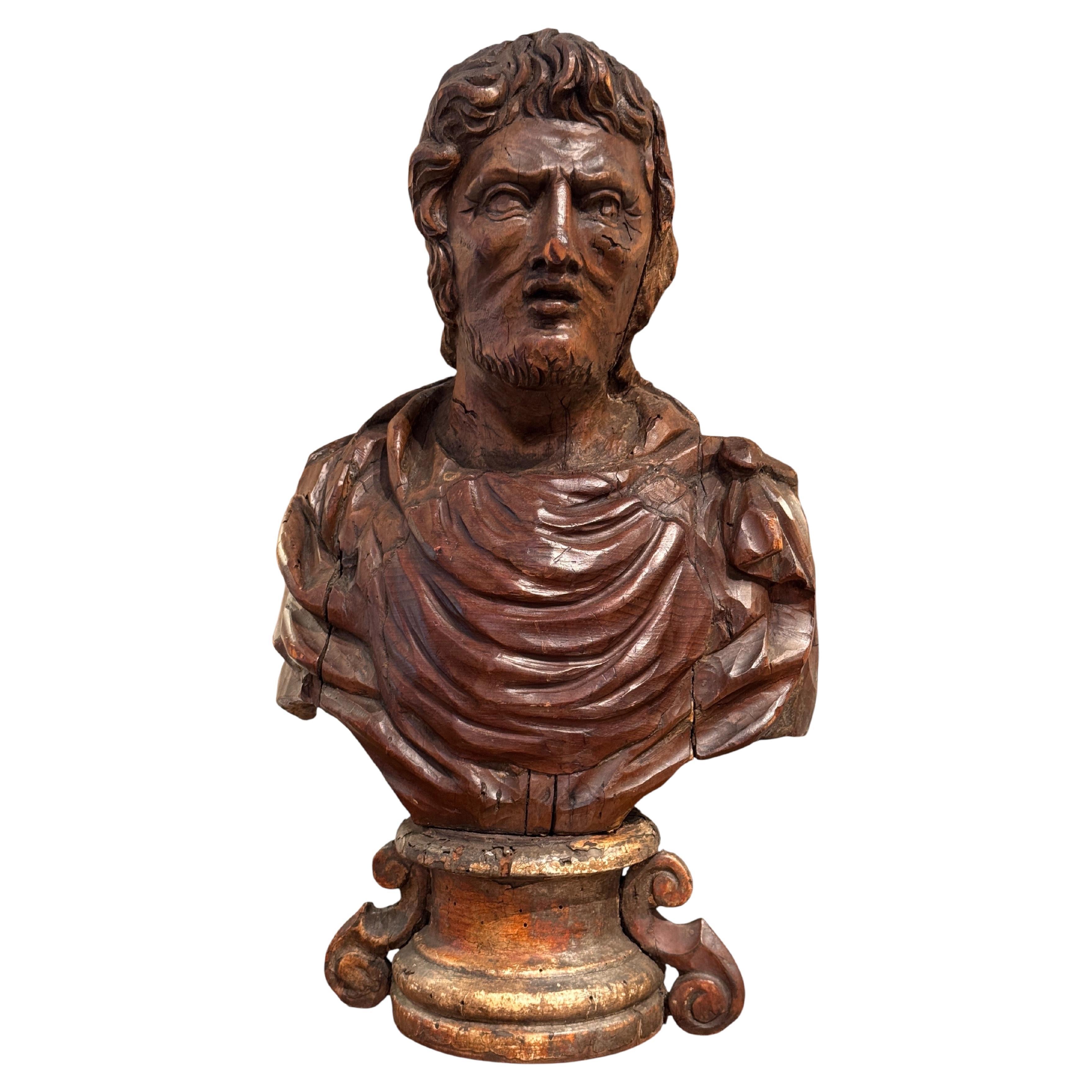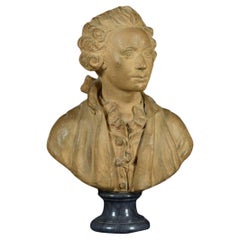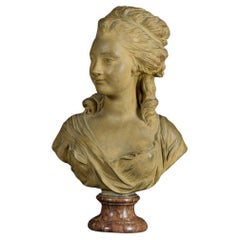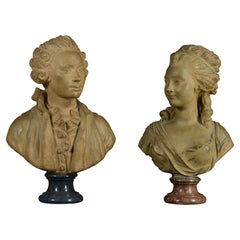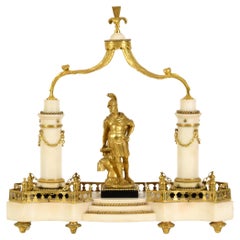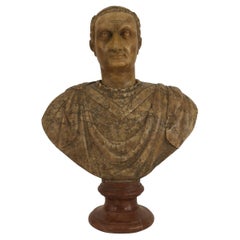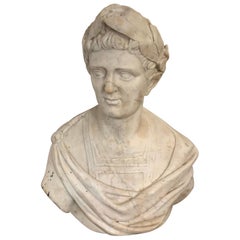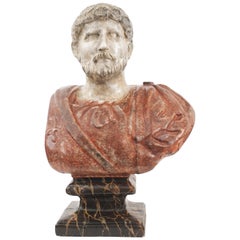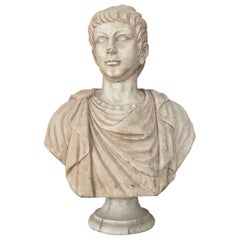Items Similar to 17th Century, Italian Ancient Carved Stone Bust of Roman Emperor
Want more images or videos?
Request additional images or videos from the seller
1 of 12
17th Century, Italian Ancient Carved Stone Bust of Roman Emperor
$6,875.95
£5,149.87
€5,800
CA$9,651.50
A$10,557.65
CHF 5,500.67
MX$127,032.19
NOK 69,658.68
SEK 65,402.83
DKK 44,178.01
About the Item
17th century, Italian ancient carved stone bust of Roman Emperor
Measures: H 33 (with base) H 28.5 (sculpture only) x 25 x 7 cm.
The ancient bust, in stone of the 17th century, despite a man of the ancient Rome, probably an emperor.
This is a portrait inspired by Roman examples. For the Romans, the center of interest in the portrait was the head rather than the body, which was often idealized. The preference therefore for the bust was a typical Roman cultural trait because, with its, it could be obtained a better individual identification.
The man wears a robe called “toga”, the official attire of the high offices of the Roman Empire, like the senator, the consul to the political magistrate and the rich in general. The toga was mandatory for the emperor. Generally it was made of wool, in a unique piece of semicircle fabric, and it was worn at first creating a bunch of folds that had to be resting on the left shoulder; it was then passed around the body and re-painted on the right shoulder. Being wide and heavy, the toga gave an imposing look to those who wore it and well represented the importance of Rome, dominating the ancient world.
The bust is a fine example of 17th century decorative sculpture. From the beginning of the Renaissance the effigies of the roman emperors were taken up as examples of earthly power, of civil commitment and of devotion to politics and to the good of all.
The sculpture rests on a base in green marble Alps, considered refined and elegant.
The object is perfect in any room of your home: on a console in your living room or in the entrance hall, it can also be placed on the dresser of the bedroom or exposed in your bathroom, bringing the charm of the splendour of the great Rome
Object accompanied by a "Certificate of Authenticity".
- Dimensions:Height: 13 in (33 cm)Width: 9.85 in (25 cm)Depth: 2.76 in (7 cm)
- Style:Classical Roman (In the Style Of)
- Materials and Techniques:
- Place of Origin:
- Period:
- Date of Manufacture:17th Century
- Condition:
- Seller Location:IT
- Reference Number:1stDibs: LU4405216952912
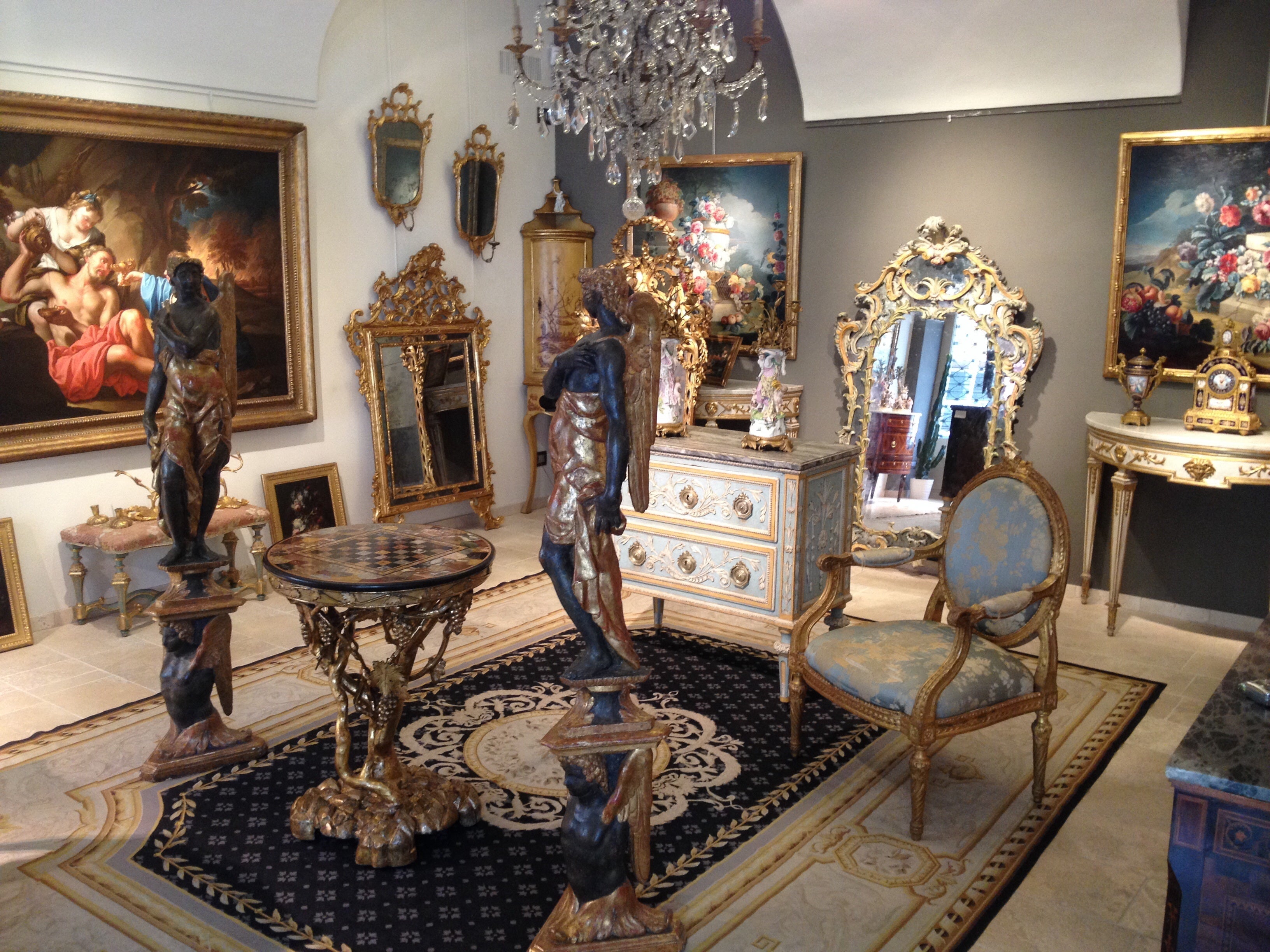
About the Seller
5.0
Vetted Professional Seller
Every seller passes strict standards for authenticity and reliability
Established in 1980
1stDibs seller since 2019
56 sales on 1stDibs
Typical response time: <1 hour
- ShippingRetrieving quote...Shipping from: Italy
- Return Policy
Authenticity Guarantee
In the unlikely event there’s an issue with an item’s authenticity, contact us within 1 year for a full refund. DetailsMoney-Back Guarantee
If your item is not as described, is damaged in transit, or does not arrive, contact us within 7 days for a full refund. Details24-Hour Cancellation
You have a 24-hour grace period in which to reconsider your purchase, with no questions asked.Vetted Professional Sellers
Our world-class sellers must adhere to strict standards for service and quality, maintaining the integrity of our listings.Price-Match Guarantee
If you find that a seller listed the same item for a lower price elsewhere, we’ll match it.Trusted Global Delivery
Our best-in-class carrier network provides specialized shipping options worldwide, including custom delivery.More From This Seller
View All19th Century, French Terracotta Bust and Marble Base with Nobleman
Located in IT
Terracotta bust depicting nobleman, marble base, 19th century, France
The refined bust depicts a nobleman dressed according to the fashion of the mid-eighteenth century in France. T...
Category
Antique 19th Century French Louis XV Busts
Materials
Terracotta
19th Century, French Terracotta Bust and Marble base with Noblewoman
Located in IT
Terracotta bust depicting noblewoman, marble base, 19th century, France
The refined bust, made of terracotta, depicts a noblewoman dressed according to the fashion of the mid-eighte...
Category
Antique 19th Century French Louis XV Busts
Materials
Terracotta
19th Century, Pair of Terracotta French Busts
By Augustin Pajou
Located in IT
Pair of terracotta French busts resting on circular marble bases, 19th century, signed on the back.
The refined pair of busts depicts a man and a woman who have been paired accord...
Category
Antique 19th Century French Louis XV Busts
Materials
Terracotta
19th Century, French Marble and Gilt Bronze Centerpiece
Located in IT
19th Century, French Marble and Gilt Bronze Centerpiece
This particular centerpiece was made, in white marble and finely chiseled gilded bronze, in France between the end of the eigh...
Category
Antique 19th Century French Louis XVI Figurative Sculptures
Materials
Marble, Bronze
19th Century, Italian White Marble Sculpture by Pompeo Marchesi with Cupid, 1840
Located in IT
19th century, Italian white marble sculpture by Pompeo Marchesi with cupid, Italy, 1840
This valuable sculpture, made in white marble in 1840, is a work signed by Pompeo Marchesi....
Category
Antique 1840s Italian Romantic Figurative Sculptures
Materials
Marble
20th Century, Italian Sculpture by Helen König Scavini, Lenci Manufactory
By Helen Scavini, Lenci
Located in IT
Helen König Scavini, Lenci manufactory
"Nude of Woman", e.g. 1927-1936
Signed under the base "Lenci/Italy"
Glazed terracotta
sizes: H 70 cm x W front 83 cm (W back 55 cm) x D 55 cm
The important sculpture, realized in glazed terracotta, is by the famous Lenci Manufactory of Turin (Italy) on model by Helen König Scavini. Of remarkable dimensions, it represents a naked woman, covered of a single cloth to life, sitting with the legs flexed asymmetrically while it supports on the arms with the hands leaned to the plan. The woman has a hieratic expression, big eyebrow arches under which the ethereal eyes are half-closed; the open lips hide a hint of a smile. The loose hair is turned back with big waves on both the head and along the back. The staining of the glazing is on the tones of musky green, which contributes to confer to this woman the appearance of a nymph or a mythological figure.
Below the base is found, hand painted, the trademark of the manufacture "Lenci, ITALY". The brand Lenci was registered in Turin on 23 April 1919, sanctioning an activity undertaken some time before by Helen König, wife of the commercial agent Enrico Scavini. The origin of the word Lenci is still controversial today; the earliest bibliography says it derived from a endearment of Elena (Elenchen, as her father called her and that she, stunned him, pronounced Lenci) while the most recent one considers the acrostic Ludus Est Nobis Costanter Industria, perhaps invented by Ugo Ojetti or built as divertissement by the poet Ignazio Vacchetti (Alias Fantasio) on the endearment of Elena. The Lenci manufactory becomes a meeting point for artists and a forge of ideas for the development and realization of dolls and puppets, children’s furniture, and later also artistic ceramics. The first artists to take an active part in the enterprise were Giovanni Riva and Sandro Vacchetti, soon joined by other great names. The success of these felt dolls earned numerous awards to the Lenci Company during the international exhibitions in Zurich, Paris, Rome or Milan. However, the originality of Lenci’s creations was soon put to the test by numerous imitations. To cope with this type of competition, Lenci began to produce artistic ceramics, whose activity began in 1927. The ceramic figures became perhaps even more famous than the dolls in cloth. The subjects ranged from the famous "nudini", the chic little ladies and emancipated women, from fantasy characters to animals, from religious images to the most disparate vases and much more.
Many artists collaborated in the realization of the models, among which it is worth mentioning the already mentioned Sandro Vacchetti, artistic director of Lenci from 1922-1934, the same Elena König Scavini, Cläre Burchart, Lino berzoini, Giovanni Riva, Giovanni Ronzan, Deabate Theonesto, Giovanni Pietro Spertini, Marcello Dudovich, Gigi Chessa, Mario Pompei, Nillo Beltrami, Mario Sturani, Giulio Da Milano, Giovanni Grande, Ines Grande, Claudia Formica, Luigi Borione, Camillo Ghigo, Giuseppe Porcheddu, Gino Levi-Montalcini, Abele Jacopi...
Category
Vintage 1930s Italian Figurative Sculptures
Materials
Terracotta
$47,832 Sale Price
25% Off
You May Also Like
Italian Neo-Classic Style Marble Bust of Roman Emperor
Located in Queens, NY
Italian neo-classic style (19th Cent) light brown marble bust of a Roman emperor mounted on a round plinth.
Category
Antique 19th Century Neoclassical Busts
Materials
Stone, Metal
Roman Marble Bust of a Caesar, 18th Century
Located in Charleston, SC
This Classical Roman marble bust of a Caesar is life-size with fine detailed carving.
Category
Antique 18th Century Italian Classical Roman Statues
Materials
Marble
Italian Painted Roman Emperor Bust
Located in Queens, NY
Italian Neo-Classic style (19/20th Cent) faux painted composition bust of a Roman Emperor wearing a red toga and mounted on a black square base.
Category
Antique Late 19th Century Italian Neoclassical Busts
Materials
Paint
Marble Sculpture Bust Of Emperor Julius Caesar After The Antique Grand Tour
Located in Tivoli Terme, Roma
The sculpture realized by a Roman sculptor as from the Roman academy tradition, is carved with white marble.
The sculpture represents the face of a young Julius Caesar, Julius Caesar formally known as Caesar was a Roman general and statesman who played a critical role in the events that led to the demise of the Roman Republic...
Category
20th Century Italian Classical Roman Busts
Materials
Marble
$8,314 Sale Price
20% Off
Italian Painted Roman Emperor Bust
Located in Queens, NY
Italian Neo-Classic style (19/20th Cent) faux painted composition bust of a Roman Emperor wearing a red toga and mounted on a black square base.
Category
Antique 19th Century Neoclassical Busts
Materials
Paint
18th Century Carved Italian Bust
Located in Charlottesville, VA
An 18th century carved Italian bust, depicting a bearded figure draped in classical robes. The carving shows deep folds and strong facial features, with areas of age cracks and wear ...
Category
Antique 18th Century Italian Busts
Materials
Wood
$1,800 / set
More Ways To Browse
Antique Greek Or Roman Marble Bust
Stone Head Sculpture Hand Carved
Italian Sculpture Stone
Hand Carved Marble Bust
Classical Marble Bust
Marble Roman Bust
Bust Emperor
Roman Marble Sculpture Bust
Ancient Bust
Marble Busts Of Roman Emperors
Roman Emperor Bust
Antique Roman Stone
Roman Emperor Sculpture
Ancient Roman Furniture
Ancient Roman Sculpture
Antique Stone Busts
Ancient Roman Marble
Carved Stone Bust
